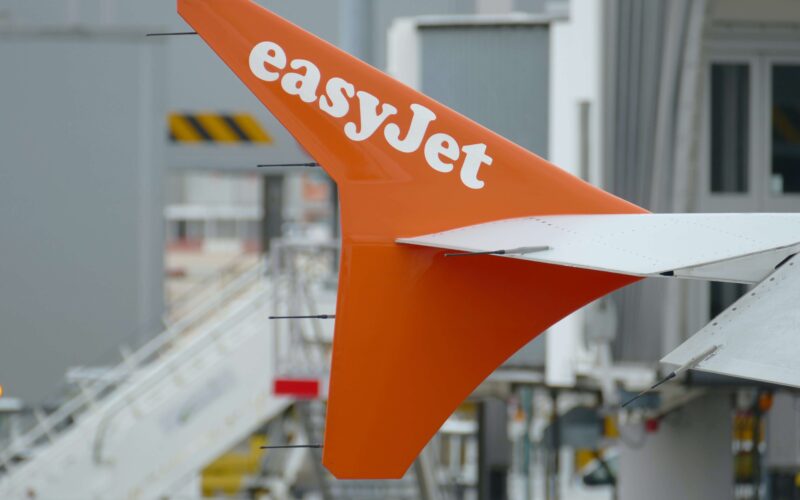The aspect of liquidity represents one of the fundamental elements in the analysis of a financial statement. In the present case, from the beginning of the pandemic to today we have heard of cash burn (rate), that is the percentage (rate) with which the liquid assets (cash) are “consumed” (burn).
easyJet had a cash burn of £774 million during Q3, which was reduced to £651 million during the last quarter (July-August-September), bearing in mind that the fiscal year is considered from 1st October to the following 30th September.
Returning to the financial situation, the company underlines that – during the pandemic – additional liquidity was injected (approximately £2.4 billion) up to the level of £3.1 billion, divided as follows: £400 million using an existing credit line (pre -Covid), £400 million through the underwriting of two bank loans, £600 million from the UK government in support of the economy, £1.3 billion through sales and lease-back operations and finally £409 million through the issuance of new venture capital.
Quick ratio
Deepening in detail the aspect of liquidity, we analyze one of the most indicative indices of the financial situation, the quick ratio, given by the ratio between the sum of immediate and deferred liquidities (numerator) and the total of current liabilities (short-term, within 12 months). As Morningstar reports, easyJet’s quick ratio has always been below 1 (0.64 in 2015, 0.74 in 2016, 0.96 in 2017, 0.86 in 2018 and 0.73 in 2019). Values below unity denote a financial situation that is not strictly stable in the short term, being an index that – in minimalist terms – must be equal to 1 or even higher. The inability to reach the value of 1 does not allow the company to be able to repay its debts in the short term, using its liquid assets (excluding the value of the warehouse) and therefore, it will have to necessarily resort to debt (under various shapes).
Statement of cash flow
Analyzing the Statement of Cash Flow, the “Net cash (used) / generated from operating activities”, that is the net cash flow from operating activities, which measures the company’s ability to (use) / generating money through its core business is profoundly negative in 2020, equal to -762 million pounds, compared to the positive 2019 figure of +761 million pounds. This data of the prospectus, tendentially, must assume positive values in order to be able to speak of a company in good health. A negative value of this figure demonstrates the company’s inability to generate money quickly enough. Looking more carefully at the balance sheet data, this is an anomalous value in itself. In detail, in “Notes 10” of the report presented by the administrators, it is found that the “negativity” of this value was almost mainly due to the decrease in “unearned revenue”, that is, those revenues generated without performing the consideration, by virtue of reimbursements that the company had to carry out to customers for flights canceled by the pandemic. However, the negative value of cash flow from operating activities is also the result of an operating loss of £899 million, compared to an operating profit of £466 million in 2019.
The latest figure in the financial statement, on the other hand, refers to the “Net cash generated from financing activities”, ie the cash flow generated by financing activities and measures the amount of cash flows used to finance the company’s activities. Referring to the above data, regarding the loans received by the company, in Notes 8, it is possible to identify the loans deriving from the already existing credit lines and the funds received by the UK government to support companies affected by the economic crisis, from pay in two tranches of £ 300 million each by 31 March 2021 and 31 March 2022. In addition, in the order of the long term (non-current), the “Eurobonds” are found for a value of approximately £ 1.4 billions and bank loans of £ 300 million.
Income statement: revenues and costs
As for the analysis of the income statement, the easyJet group reports an overall loss of £ 1.2 billion compared to a profit of £ 420 million in the same period last year. The determination of this operating result is undoubtedly influenced by the pandemic and by the restrictions applied by the various governments with a view to containing the contagion. Now, however, let’s analyze specifically revenues and costs.
As far as revenues are concerned, the group closes at 30 September 2020 with £3 billion, more than 50% less than the 2019 figure. The figure is affected by the “only” 48 million passengers transported compared to 96 million in 2019 and also of the consequent reduction of the Airline revenue per seat (£) of around £ 6. Ancillary revenues, in addition, decreased by 48.7% to £706 million (2019: £1,376 million). This reflects the reduction in passenger volumes during the second half of the year.
As for costs, the company emphasizes an important and decisive attention to cost containment, qualifying itself as one of the leading companies in the sector in this area. Costs (excluding those for fuel, which are included in the “derivatives and financial instruments” values) fell by 30.8% compared to 2019 thanks to a more efficient management of the operational activity and the flexibility of the crew structure itself, maintenance costs and airport concession fees.

